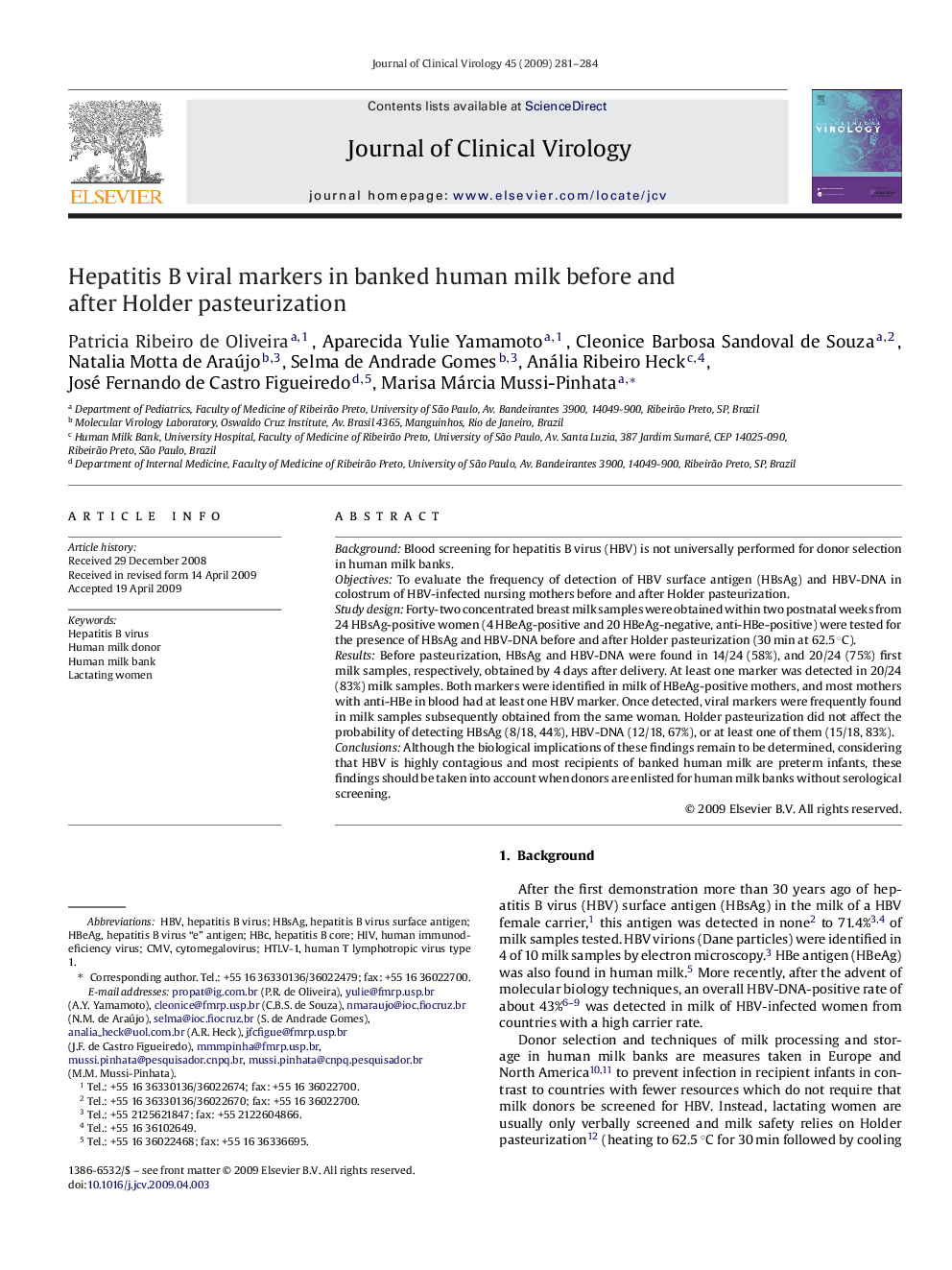| Article ID | Journal | Published Year | Pages | File Type |
|---|---|---|---|---|
| 3369903 | Journal of Clinical Virology | 2009 | 4 Pages |
BackgroundBlood screening for hepatitis B virus (HBV) is not universally performed for donor selection in human milk banks.ObjectivesTo evaluate the frequency of detection of HBV surface antigen (HBsAg) and HBV-DNA in colostrum of HBV-infected nursing mothers before and after Holder pasteurization.Study designForty-two concentrated breast milk samples were obtained within two postnatal weeks from 24 HBsAg-positive women (4 HBeAg-positive and 20 HBeAg-negative, anti-HBe-positive) were tested for the presence of HBsAg and HBV-DNA before and after Holder pasteurization (30 min at 62.5 °C).ResultsBefore pasteurization, HBsAg and HBV-DNA were found in 14/24 (58%), and 20/24 (75%) first milk samples, respectively, obtained by 4 days after delivery. At least one marker was detected in 20/24 (83%) milk samples. Both markers were identified in milk of HBeAg-positive mothers, and most mothers with anti-HBe in blood had at least one HBV marker. Once detected, viral markers were frequently found in milk samples subsequently obtained from the same woman. Holder pasteurization did not affect the probability of detecting HBsAg (8/18, 44%), HBV-DNA (12/18, 67%), or at least one of them (15/18, 83%).ConclusionsAlthough the biological implications of these findings remain to be determined, considering that HBV is highly contagious and most recipients of banked human milk are preterm infants, these findings should be taken into account when donors are enlisted for human milk banks without serological screening.
